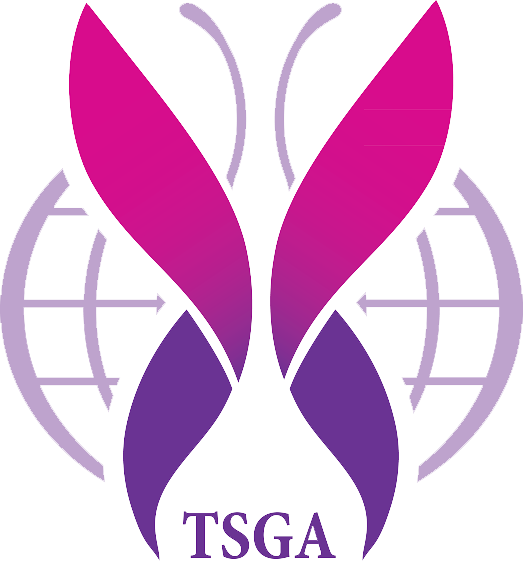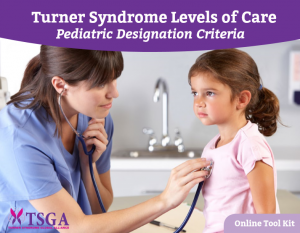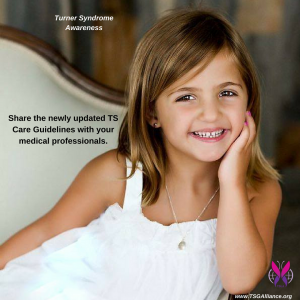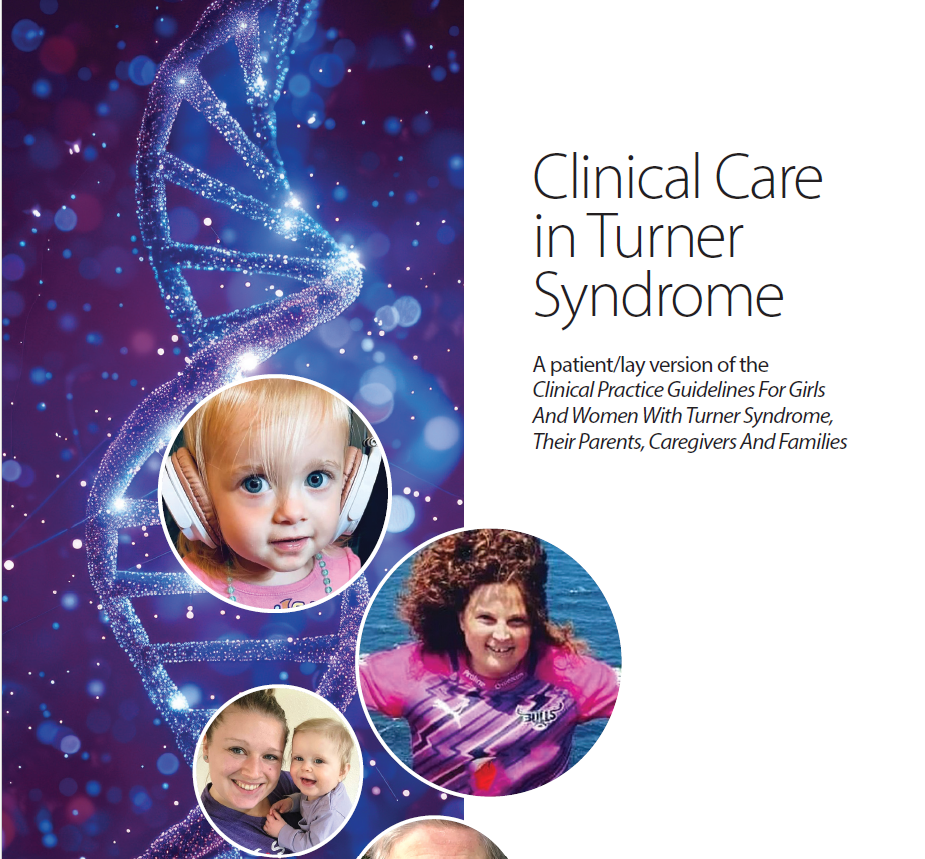TSGA has developed the TS Levels of Care Pediatric Designation Criteria. These levels will be used to inform the patient and family population of the level of care they can expect from each Clinic. If your hospital has a Turner syndrome program, and you would like to be included on the TSGA list of providers, please complete the Clinic Designation Survey.
Clinic Designation Criteria (click here)
Levels of Care Designation Survey (click here)
Turner Syndrome Care Guidelines for Professionals
After two years of dedicated work by a team of experts from both the US and Europe, the new Care Guidelines for TS have been finalized.
2023 Clinical Care Guidelines for Professionals
These guidelines are directed by evidence-based research. We are now working with the greater TS community to increase research to fill in gaps in our knowledge.
Turner Syndrome Care Guidelines for Patients and Families
This is a brief synopsis of the Professional Care Guidelines
intended to improve care by encouraging communication between individuals with Turner syndrome/parents/caregivers and their health-care providers during visits.
2024 Family Guidelines
 Turner Syndrome: Diagnosis and Management, American Family Physician, 2007 includes this table:
Turner Syndrome: Diagnosis and Management, American Family Physician, 2007 includes this table:
SORT: KEY RECOMMENDATIONS FOR PRACTICE
| CLINICAL RECOMMENDATION | EVIDENCE RATING | REFERENCES |
|---|---|---|
|
If any Y chromosome material is shown on the karyotype, prophylactic laparoscopic gonadectomy is required. |
C |
|
|
Cardiovascular evaluations should be performed at diagnosis to rule out congenital heart defects. |
C |
|
|
Ongoing estrogen therapy should be initiated in the preteen years. |
B |
|
|
Short stature should be treated with human growth hormone until the patient reaches a bone age of 14 years. |
A |
|
|
Calcium and vitamin D supplementation should be initiated at 10 years of age. |
C |
A = consistent, good-quality patient-oriented evidence; B = inconsistent or limited-quality patient-oriented evidence; C = consensus, disease-oriented evidence, usual practice, expert opinion, or case series. For information about the SORT evidence rating system, see page 323 or http://www.aafp.org/afpsort.xml.
Overview of Turner Syndrome, Medscape
Turner Syndrome Overview, Mayo Clinic
Radiographic Features of TS, Radiopaedia. org
Click on x-ray for additional images
Bicuspid Aortic Valve, Radiopaedia.org
Click on image to view resource page
Experts Call for Improved Estrogen Testing Accuracy, endocrineweb, 2015
[KClientError] [REQ_ERR: OPERATION_TIMEDOUT] [KTrafficClient] Something is wrong.




